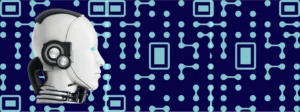
Artificial Intelligence (AI) has made significant strides in making our lives easier. Chatbots like ChatGPT, a creation of OpenAI, are revolutionizing how we interact with technology. When used cautiously, advanced technology can be a true helper. We will take a look if it is possible to learn coding with ChatGPT.

✅ AI Essay Writer ✅ AI Detector ✅ Plagchecker ✅ Paraphraser
✅ Summarizer ✅ Citation Generator
Key Takeaways
- ChatGPT is a powerful tool but requires careful use in programming.
- Always verify the output of AI chatbots and don’t accept their suggestions blindly.
- ChatGPT is best used for discrete tasks, with human programmers handling more complex issues.
- Security is a key concern with chatbot-generated code.
- Both AI and traditional programming have their strengths – the best approach combines them.
Carefully Choose Applications
ChatGPT and similar large language models (LLMs) have proven highly useful for straightforward, discrete programming tasks. They can manage data, generate visualizations, even assist with software translation from one language to another. However, computer scientist Neil Ernst from the University of Victoria warns that these tasks don’t fully encapsulate the essence of software engineering. “Software engineering is a lot more than just solving a programming puzzle,” Ernst explains. As powerful as ChatGPT might be, it can’t replace human developers in understanding and managing complex trade-offs that software engineering involves. In the context of AI chatbots, it’s crucial to understand their capabilities and limitations to choose the appropriate applications effectively.
Trust, but Verify
A key issue with using AI chatbots for coding is that while they sound confident, they aren’t always correct. The underlying issue lies in their training data – the vast swathes of code available online that these chatbots learn from. The quality of this code is, unfortunately, often quite low. Thus, the code that chatbots output may not always be efficient or robust, and it might perform poorly with large datasets. Notably, it could contain security vulnerabilities.
Brendan Dolan-Gavitt, a computer scientist at New York University, conducted an alarming experiment upon Github’s Copilot programming tool’s launch in 2021. He and his team tested it in 89 security-relevant scenarios, including the ability to check for malformed queries using the language SQL that could corrupt a database — known as an SQL-injection attack. They found that about 40% of the time, Copilot was producing code that was vulnerable. However, when Dolan-Gavitt put those scenarios to a newer version of the LLM underlying ChatGPT, called GPT-4, the error rate fell to 5%. This suggests that while advancements in AI technology can improve the situation, vulnerabilities still exist.

Thus, the advice remains: always scrutinize the output of your AI tools, especially in mission-critical situations. Web interfaces for databases or visualization tools might require extra vigilance due to their sensitive nature. However, if you’re working on a programming problem where you already know the expected outcome, computer scientist Sayash Kapoor at Princeton University in New Jersey suggests going for it, “because it’s easy to check if you’re wrong.”
In essence, while AI chatbots like ChatGPT can assist significantly in the coding process, they are not a foolproof solution. Users need to verify their code and consider the application’s nature and requirements before implementing the generated code. The guiding principle remains – trust, but verify.
Unleashing the Power of AI Chatbots
The world of AI chatbot-based coding is rapidly evolving, opening up new opportunities for beginners and experts alike. There are three central concepts to bear in mind as we navigate this brave new landscape: Iterate, Anthropomorphize, and Embrace Change.
Iterate is the first step on this journey. As Ko suggests, working with AI chatbots is not a “single-shot experience.” Instead, it’s an ongoing conversation that requires active engagement and critical thinking. The chatbot gives a response, and you interpret it, ask for more detail, or ask for corrections. This iterative process is what Gangqing (Michael) Hu, a bioinformatician at West Virginia University, leveraged to create OPTIMAL4. The method allows beginners to provide detailed prompts, test the chatbot responses, and iteratively refine their prompts based on the feedback. This back-and-forth conversation, Hu explains, is key to optimizing the chatbot’s output. If you find yourself stuck, Xijin Ge from South Dakota State University suggests adjusting chatbot settings, like the ‘temperature’ which controls the creativity of the output.
The second concept is to Anthropomorphize the chatbots. Despite being non-human, it can be beneficial to treat these AI tools as if they were interns—hardworking, keen, but also prone to mistakes. To optimize results, ensure that instructions are precise, the problem is broken down into smaller pieces, and any ambiguity is minimized, as suggested by Paul Denny from the University of Auckland, New Zealand. Assigning a role to the chatbot—such as a biologist fluent in Python—can also help guide the chatbot towards a more productive and relevant output.

Lastly, we must Embrace Change. AI chatbots are dynamic, continually improving and becoming more powerful. They are growing to handle more complex prompts and providing more nuanced responses. Simultaneously, new tools are emerging, such as the Code Interpreter plug-in that transforms ChatGPT into a digital data analyst, letting users interact directly with their data. The rapid progress in the AI chatbot realm keeps users on their toes, requiring them to adapt and grow with the technology. As one AI blogger aptly put it, “It’s like having a conversation with your data. How cool is that?”
In essence, to fully exploit the potential of AI chatbots in coding, one must engage in a constant iterative process, anthropomorphize the chatbots to improve communication, and embrace the rapid evolution of these technologies. The future of AI chatbots to learn coding is bright, and these strategies are key to navigating this exciting and challenging terrain.
ChatGPT vs. Traditional Programming: Which is Better?
In the debate between AI chatbots like ChatGPT and traditional programming, each holds its pros and cons. To provide a clearer picture, here’s a comparison table:
| ChatGPT 🤖 | Traditional Programming 👩💻 | |
| Speed | Fast ⚡ | Varies 🕐 |
| Cost | Low 💰 | High 💲 |
| Accuracy | Varies 🎲 | Reliable ✅ |
| Learning Curve | Easy 🚀 | Steeper 🧗♂️ |
| Debugging | Limited 🐞 | Comprehensive 🛠 |
| Interpretation of Tasks | Literal 📝 | Intuitive 🧠 |
| Security | Risky ⚠️ | Safer 🔒 |
It’s important to note that while ChatGPT may excel in speed and cost-effectiveness, traditional programming is more reliable, comprehensive, and safer in terms of security. The best approach, therefore, lies in combining the strengths of both, using AI to handle routine tasks while relying on human programmers for more complex, nuanced issues.
In conclusion, chatbots like ChatGPT represent a powerful tool in the programming landscape. However, they should be used with caution, given their limitations. For the best outcomes, it’s crucial to choose the right applications, verify their output thoroughly, and always prioritize safety.
Read more:
DeepMind’s AlphaDev Changes the Art of Coding with New AI-Optimized Algorithms
How AI is Redefining the Concept of Computer Programming
Demystifying Programming — Yes, You Can Learn It Without Prior Coding Experience
Follow us on Reddit for more insights and updates.





Comments (0)
Welcome to A*Help comments!
We’re all about debate and discussion at A*Help.
We value the diverse opinions of users, so you may find points of view that you don’t agree with. And that’s cool. However, there are certain things we’re not OK with: attempts to manipulate our data in any way, for example, or the posting of discriminative, offensive, hateful, or disparaging material.